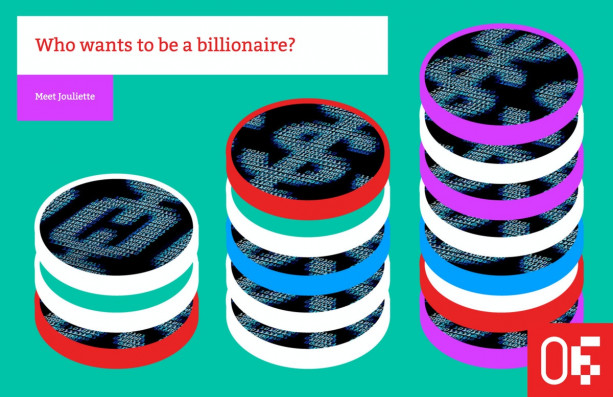Stay in the know on all smart updates of your favorite topics.
BewustwordingsModel Smart City

Hoe slim is de ideale leefomgeving wat jou betreft, nu en in de toekomst? Wat betekent dat voor o.a. je strategie, diensten en technologie?
Vanuit phbm voegen we graag een gereedschap toe aan jouw Toolbox voor Smart City-vraagstukken. Eén waarbij we het voorstellings- en inlevingsvermogen activeren en welzijn centraal staat: het BewustwordingsModel. Dit model maakt de positie en wensen van jou en de ander expliciet en voorkomt dat er ruis ontstaat over het niveau van ‘slimheid’ in de leefomgeving. Door de toelichting van de passende organisatie, samenwerking, strategie e.d. bij de niveaus ontstaat een scherp beeld van wat het gekozen niveau betekent voor het individu, de organisatie of zelfs de samenleving als geheel. Eén van de centrale vragen bij het model is: hoe ‘smart’ wil je zijn en waar zit de optimale balans tussen mens en technologie?
Eerste gepubliceerde versie is tot stand gekomen samen met partners in de City Deal (‘Een slimme stad, zo doe je dat’). Het laat op vijf niveaus zien in welke mate een organisatie of bedrijf slim is. Eén van de doelen hiervan is om te bepalen of opdrachtgever en opdrachtnemer dezelfde taal spreken. Vanuit phbm zijn we doorgegaan op het model en hebben onder andere ethiek en mobiliteit als pijlers toegevoegd.
Het model is openbaar inzichtelijk, phbm begeleidt graag in het proces om samenwerkingspartners gezamenlijk bewuster te maken op welk niveau ze staan (gebruikmakend van het model) en met welke ontwikkelingen je rekening kan houden in het vraagstuk wat op tafel ligt (op vlak van organisatie, diensten of ethiek bijvoorbeeld).
Open Call: Create impact with the European CommuniCity project!

Does your organisation work with vulnerable target groups in Amsterdam, or are you a tech company with great ideas for digital solutions for this group? Create tech applications together for the challenges of vulnerable communities during the European CommuniCity project.
From 28 February to 31 March, you can submit your proposal for one of the challenges to CommuniCity for a chance to win a €12,500 grant to test your idea in practice.
How does it work?
- Companies or organisations submit their proposal via the CommuniCity website;
- The submissions are assessed against the set criteria and thus the winners are selected;
- The winning entries receive a grant of 12,500 euros to develop and test their solution together with the target group in Amsterdam.
For more information about the project, the challenges for Amsterdam and application conditions check the website below!
Building a shared vision of the city - with LEGO!
Building the largest interactive LEGO model of the future city ever!
Imagine a model of the city; however, instead of a literal representation, this is a sculpture that holds ideas and dreams from citizens, policymakers, entrepreneurs and visitors about what the city might be like after we solve major transitional challenges (e.g. sustainability, energy, equality, smart).
What would it feel like to be in this city? What do people wish this future city to become?
the goal
A model of the city that contains the ideas that a diverse group of people have about how the city might emerge from major transitional change like climate adaptation, sustainability, equality, smart. Imagine the city from what might be and what opportunity change offers.
the form
A room-sized model built with LEGO in a public space and with interactivity (e.g. app / QR link / AR) to share the stories that this model contains.
the process
Lego is an powerful way to evoke and capture stories about how people think about something. Through a series of workshops, people from all parts of the city will be invited to share how they think about the future of the city and capture their stories in a collective model. An interactive installation opens up those stories to passers-by and other participants.
partners
finance, organisational, tech
call to action
Get in touch if you want to contribute to the realisation of the largest LEGO city vision model ever!
Management Laboratory: Creation of New Businesses.

Hello entrepreneurs.
I am looking for partners to generate brainstorm. And create a global new business project.
Interested to know more, send an email to
motivaco@gmail.com
The 100 Intelligent Cities Challenge

The 100 Intelligent Cities Challenge (ICC) is a European Commission initiative that supports 136 cities in using cutting-edge technologies to lead the intelligent, green and socially responsible recovery. The ICC cities and their local ecosystems will be engines for the recovery of their local economy, create new jobs, and strengthen citizen participation and wellbeing.
The ICC is part of a wider EU support system that recognises the importance of delivering on the promises made by the European Green Deal, the digital strategy, and other EU policies. It looks to move towards a more digital, service-oriented and low-carbon economy, supported by a knowledge-based society, that enables circular economy systems through ‘local value loops’, evidence-based reskilling, and sustainable investments.
Participating cities receive one-to-one strategic advice from international experts on fine thematic strands: green economy and local green deals, improving the citizen participation and the digitalisation of public administration, green and digital transition in tourism, resilience of local supply chains, up- and reskilling of the workforce. ICC Cities are also supported by transversal services on access to data, access to finance and through a marketplace full of innovative solutions.
The Amsterdam Region, represented by Amsterdam Economic Board and Amsterdam Smart City (ASC) is one of the ICC mentor regions, alongside European mentor cities Aarhus, Antwerp, Barcelona, Espoo, Hamburg, Nice, Porto, Rijeka and international mentors Medellin, Singapore and Toronto. By participating in the ICC, the Amsterdam Region will share its experience and learn from other best practices related to multi-stakeholder collaboration, innovation ecosystems, circular economy and citizen participation.
ICC Updates:
• Launch of 100 Intelligent Cities Challenge
• ICC Challenge Mayors’ Summit
• Launch of ICC Renovation Action Group
• Public Kick-off 2nd ICC City Lab
• ICC - 3rd City Lab
• 200 Intelligent & Climate Neutral Cities Jam
• ICC - 4th City Lab
• Invitation to co-create European transition pathways for more resilient, greener and digital industrial ecosystems
• ICC - 5th City Lab
• Developing circular and sharing economy practices in cities
• The 100 Intelligent Cities Challenge: Looking Back & Looking Forward (End of Phase 1)
Responsible Sensing Lab

Smart city systems can help solve urban challenges. But when collecting data, what public values are involved? The Responsible Sensing Lab explores how to integrate social values such as autonomy, privacy, transparency, inclusiveness and empowerment in the design of sensing systems in public space.
In January 2021 the Responsible Sensing Lab was officially launched during an interactive livestream event. In essence the Lab is a testbed for conducting rigorous, transparent, and replicable research on how our smart technologies placed in public space can be designed in a way that makes the smart city ‘responsible’. Responsible Sensing Lab is a collaboration between the City of Amsterdam and AMS Institute.
A lab for a ‘responsible’ smart city
The City of Amsterdam has many smart technologies in place: from smart devices that measure things (i.e. sensors) to smart devices that steer processes in the city (i.e. actuators) such as traffic lights, charging stations, adaptable street lights, barriers that go up and down, and adaptive digital signs.
At the Responsible Sensing Lab we research, develop and integrate smart technologies like the aforementioned to help solve urban challenges. At the same time, we explore how to embed society’s public and democratic values in the design of these innovations.
(Re)designing, prototype testing and implementing responsible sensing systems
Within the Lab academics are invited to connect and work with practitioners who are responsible for digital systems in the city to (re)design, prototype and test (more) responsible ways of sensing in public space.
Hence, Responsible Sensing Lab is a place where teams of multi-disciplinary stakeholders – such as computer scientists, policy makers, psychologists, designers and hardware experts – can address existing hardware, software and other city sensing systems.
Core values
At the Responsible Sensing Lab, we use the City’s values (TADA, Digital City Agenda) as our starting point. We explore what these values mean when applied to actual software, hardware, user-experience design and governance.
Also, we are inspired by the methodology of value sensitive design. This approach allows us to focus on design choices inherent in the type of sensing hardware, the distribution of intelligence between cloud and back-end, the physical design and placement of sensors in public space, and interaction possibilities for citizens.
Do you want to know more or are you looking to collaborate? Contact us via our website!
Wicked Problems
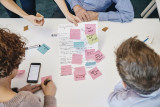
Te wicked? Niet voor ons.
Wij werken allemaal aan urgente, complexe, maatschappelijke uitdagingen. Issues die schier onoplosbaar lijken, van dilemma’s en paradoxen omgeven, nog niet duidelijk hoe het moet. Wel is duidelijk dát het moet, dat we elkaar nodig
hebben en dat we er NU aan moeten beginnen. Om met de woorden van Jan Rotmans te spreken; we leven niet in een tijdperk van verandering maar in een verandering van tijdperk. En hier hoort een nieuwe gereedschapskist bij.
En of je nou aan energietransitie werkt, andere mobiliteitssystemen, creëren van waterstofhubs, peer to peer autodeelsystemen, het maakt niet uit, we zien dat al deze opgaven op enig moment tegen gelijksoortige barrières aanlopen. Op samenwerking, financiering, privacy, onvoldoende aansluiting op de maatschappij, om maar een paar voorbeelden te noemen.
Unieke samenwerking
Als Amsterdam Smart City netwerk willen en kunnen we deze opgaven niet laten liggen. Door het bundelen van onze kennis en expertise kunnen we als netwerk iets unieks bieden en de wil en durf tonen om deze barrières te doorbreken. De betrokken partners die dit uitdenken en begeleiden zijn RHDHV, Kennisland, Drift, NEMO, Arcadis, Alliander, HvA en Metabolic. Zij bundelen hun expertise en ervaring om de echte vragen boven tafel te krijgen, tot nieuwe manieren van samenwerken te komen en barrières te doorbreken. We richten ons met name op de start van de samenwerking. Gezamenlijk ontwikkelen we een ‘wicked problem aanpak’. Op een nieuwe manier, lerend door te doen, exploratief.
Waar moet je aan denken?
Wat is eigenlijk het echte probleem? Wiens probleem is dit? Hoe kijken anderen er tegenaan? Welke andere partijen lijken nodig? Hoe vind je ze? Hoe ga je om met eigenaarschap en botsende frames? Hoe zorg je dat je al in
een vroeg stadium de maatschappij (bewoners, ondernemers, werknemers, etc) betrekt en hun ervaringen in het project trekt? Het wicked problem team zet nieuwe methoden in voor het beantwoorden van deze vragen. En het creëren van de benodigde commitment om het vraagstuk aan te pakken. Niets staat van te voren vast, want we passen ons aan aan wat we tegenkomen. Met elkaar ontwikkelen we een nieuwe aanpak om de barrières te doorbreken.
Blue Force Tracking

Testing medical certified body sensors to detect unexpected behaviour, triggering an alert, which allows the command & control room to act and better support their fellow officers in the field.
[►
Blue Force Tracking - Nalta Experience #1
How to improve the protection and safety of the Dutch Blue Force using smart Technology?
Nalta built a new innovative Internet of Things solution solving just that. In partnership with the Netherlands Police, the municipality of Amsterdam, Johan Cruijff Arena, Dell Technologies and Dell Boomi we cre
Nalta YouTube](https://www.youtube.com/watch?v=_cyFp_XGLFA)
5G-Blueprint

The 5G-Blueprint project is an international consortium of 28 parties. Together, these partners will be researching how real-time data exchange to and from vehicles, between terminals and vehicles, and between vehicles and distribution centers can contribute to increased efficiency in the supply chain, and help to resolve driver shortages by providing remote control of and support for vehicles and vessels. These developments are expected to improve accessibility of a key logistical corridor between the Netherlands and Belgium (Vlissingen – Ghent – Antwerp), as well as creating more jobs and strengthening the competitive position of the region. New 5G telecommunication technologies can be deployed as a useful resource in this area.
<https://eurofiber.com/press/eurofiber-partners-with-international-research-project-5g-blueprint/>
Conscious Cities

How might we automate access to a public digital ecosystem for citizens and machines in order to grow a conscious city? How might we incentivize all citizens and companies to interact with the public digital ecosystem of the city in order to improve livability, democratic representation and societal engagement?
Read our ecosystem document
Join our online ecosystem platform
5G
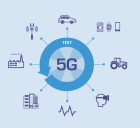
5G will be the new generation of mobile connectivity. The connection will be faster and more reliable, and will bring previously unknown possibilities for citizens and business. Amsterdam is exploring the opportunities and obstacles on the road to a safe and useful 5G network. One of the ways we do this is with our field lab in Amsterdam South East, from the train station to the Johan Cruijff ArenA. But also through regional, national and international collaborations.
Amsterdam Data Exchange (AMDEX)

If data is the new gold, how can we ensure that we can all benefit from the possibilities?
Read the report about the principles of AMDEX (link)
The idea originated during the Science and Business dinner organized by Amsterdam Science Park (ASP). With Science Park’s history in the field of technological innovation and digital connectivity, the Amdex was a logical next step. As argued by Margo Keizer (ASP), "data sharing is already happening here, but at an informal level. We bring all these different initiatives together. To do this, we need to address various infrastructural and legal issues." The Amsterdam Data Exchange is an initiative to do exactly that, she adds.
Wouter Los questions: "how can we work efficiently with all this data?” With his extensive experience in the European scientific community, Los helped in the investigation of the function of the data marketplace. He explains "we want to go to an open, democratic playing field. In this model - in contrast to the monopolistic models that you now come across - the data remains from its owner and they decide which data can be shared with whom and under what conditions. We build a market model in which everyone is able to consult and use data in a transparent, familiar manner."
Chief Technology Officer, Ger Baron mentions, "since 2011, the municipality have had an open data policy. Municipal data is from the community and must therefore be available to everyone, unless privacy is at stake. In recent years we have learned to open up data in different ways.” He adds, “panorama photos, for example, are freely accessible on our data portal. In addition, we share data with market parties to find a parking space. We want to share data, but under the right conditions. This requires a transparent date market which is exactly what the Amsterdam Data Exchange can offer."
The Black Box Bellagio

Welcome to the Black Box Bellagio - an unusual casino that won’t take your money, but is after your freedom, integrity and private data instead. Play with the (un)fairness of expected values, predicted risks, and giving up your identity. Disclaimer: The house always seems to win.
The internet services we think of as free are often paid for with our data: it is the price of access, and is used to determine our treatment and advantages. Our data feeds the algorithms which can unfairly or wrongly categorise, exclude or discriminate against us. The Black Box Bellagio uses the dynamics of a casino to communicate the asymmetry of this relationship. At this casino, like on the internet, your personal data determines the advantages you get, the luck and misfortune you experience, and how much it really costs you to play.
The Black Box Bellagio has been developed by Roos Groothuizen (1992, NL), an Amsterdam/Utrecht-based designer and artist, who cares about digital rights. Fascinated with the unfair distribution of information and how online algorithms systematically discriminate us, her work reflects on in-depth research and recent developments, often with interactive or game-like elements. The Black Box Bellagio has been realized in collaboration with Ymer Marinus and the Waag.
Film documentation from De Nieuwe Anita (May 2018), by Jimena Gauna for Waag:
The Black Box Bellagio at de Nieuwe Anita / Aftermovie
This project has received funding from the European Union’s Horizon 2020 research and innovation programme under grant agreement No. 732546. The Black Box Bellagio is organised as part of DECODE, a project developed by 14 European partners. Through this casino DECODE aims to engage a new group of people in conversations about personal data, privacy and data commons.


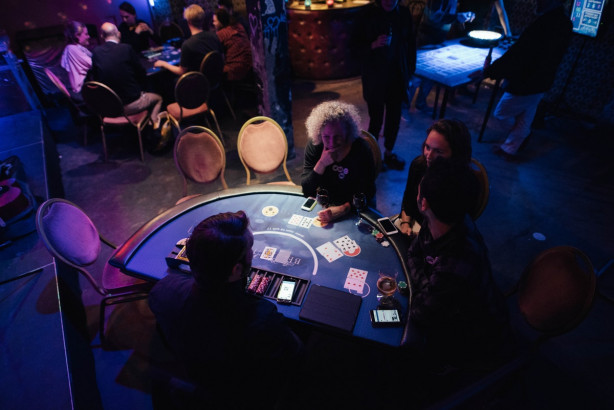

Pictures by Jimena Gauna for Waag
More picture and information: Click here
Pavnext - technological pavements
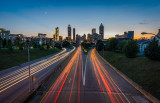
Pavnext´s solution consists of a road pavement equipment that allows kinetic energy to be extracted from vehicles and consequently reduce their motion speed without any action of the driver and without impacting the vehicle, thus promoting road safety at locations where it is required to circulate at low speed. The energy captured is then converted into electrical energy, which is produced without associated emissions and can be used in public street lighting, crosswalks, sensors, traffic lights, charging electric bicycles or even injected into the power grid. Additionally, Pavnext also provides real-time data regarding traffic and velocity, as well as generated and consumed energy, which are sent to the cloud and later used to generate reports and to optimize energy consumption in real time, promoting energy efficiency.
We are looking for new international partners that are interested in implementing pilot plants with us, to help us validate our product and reach TRL9. Please don´t hesitate to contact us if you´re interested.
TechConnect

As part of the TechConnect action programme, a number of initiatives are being launched to increase equal opportunities in the tech sector by making related study programmes and tech jobs accessible to everyone. In practice, this means that thousands of women, people from disadvantaged neighbourhoods and owners of SMEs will be trained to become coders, data analysts, growth hackers, UX designers or tech administrators.
For more information, visit the website: <https://techconnect.city/>
CATALYST

The energy consumption of data centres in the EU is predicted to reach 104 TWh in 2020. With the continuous infusion of IT services in our daily lives and the emergence of the Internet of Things (IoT), distributed data centres and the cloudification of the legacy computer systems this number should come as no surprise. And energy is indeed a precious commodity. As such, to ensure sustained availability, reliability and security of Europe’s critical infrastructures, data centres should reinforce their investments towards energy efficient business innovation and successfully lead the on-going energy transition. Taking up such a pivotal role will bring opportunities for energy efficient data centres to not only reduce their operating costs and improve their performance and efficient use of resources, but also create new revenue streams through waste energy reuse and energy flexibility services offerings.
Amsterdam Open Beacon Network

The City of Amsterdam is exploring the opportunities of a city wide, open beacon network. Currently 200 beacons are installed on almost all bus- and tram stops in the innercity. This is a first step. At this current stage, we want to involve app developers in the use case exploration for such a network.
We would like to invite you to test the open beacon network, and find out what kind of opportunities arise for your business.
Join the Google Group <https://groups.google.com/forum/#!forum/amsterdam-open-beacon-network> to get instant access to the Amsterdam Open Beacon Network and start using the beacons by adding your attachments in your own namespace.
LoRa Smart Lighting + Lightwell

The Marineterrein was keen on developing a living lab for new technology and smart city use-cases. Lightwell helped to realize this ambition by combining its Friso Kramer public lighting fixtures with the most promising Smart Lighting technology available: LoRa.
The LoRa technology is a point-to-point internet of things communication system that uses the free available 868mhz frequency. At the Marineterrein Lightwell and technology partner Ziut decided to use a private (non telecom) network to secure its open-source character but also to guarantee the lifespan of the system. This is interesting for large metropolitan area's if they have smart city ambitions because the availably of the network is more secure if the City runs its own network and isn't solely dependent on a network-provider like a telecom-company. LoRa technology is therefore a future-proof system to which al kinds of features (censoring, lighting etc.) can be added.
The whole system set-up is on show at the Marineterrein. The 42 fixture can't be missed because of the beauty of the design by Friso Kramer.
During the We Make the City event 20-24 June 2018 tours will be held to explain the system functionalities.
Jouliette

Spectral and Alliander have launched a new blockchain-based energy sharing token at De Ceuvel in Amsterdam. Named the ‘Jouliette’, the new token aims to empower individuals and communities to easily manage and share their locally produced renewable energy.
To read the full article, please go here: https://spectral.energy/news/jouliette-at-deceuvel/
Full article: <https://spectral.energy/news/jouliette-at-deceuvel/>
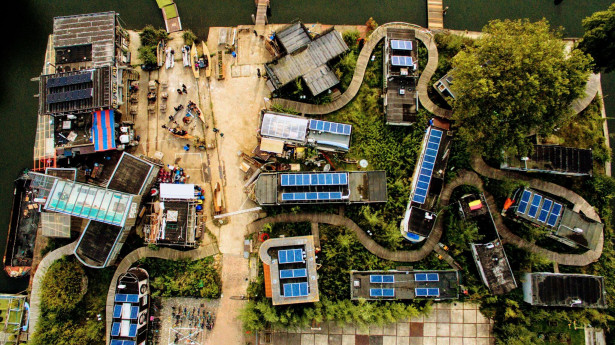
A birds-eye view image of the De Ceuvel which consists of 16 office buildings, a greenhouse, a restaurant, and a bed and breakfast – all connected to a private, behind-the-meter smart-grid.

A screenshot of the real-time power-flow map of the De Ceuvel microgrid, which is one of the features of the Jouliette platform. The energy data of each building is visualized in real-time, with the green lines representing renewable energy feed-in, and red lines signifying that the building is consuming from the grid.
Smart Stories
Check the article about Jouliette featured in our online magazine 'Smart Stories':
Stay up to date
Get notified about new updates, opportunities or events that match your interests.

